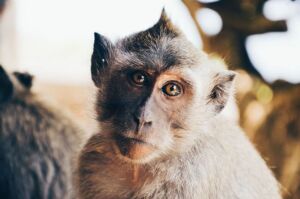News
Novo Nordisk’s use of monkeys in testing has skyrocketed
This article is more than 2 years old.
Animal rights group has criticised biotech giant for going against its own declared target of curbing its use of monkeys

Novo Nordisk has increased its testing on animals recently (photo: HippoPx)
Novo Nordisk has a declared target that involves not using monkeys during testing and the clinical trials of its products.
But according to the Danish biotech giant’s own figures, its use of monkeys in studies has shot up in recent years – quadrupling in 2022 compared to 2019.
“I appeal to Novo Nordisk to take responsibility in this area because there are problems with these animals. And they have a declared policy to actually reduce their number of animals used for testing,” Britta Riis, the head of animal rights group Dyrenes Beskyttelse, told DR.
Dyrenes Beskyttelse maintains that testing on monkeys is a problem because they are highly intelligent animals that experience trauma during testing and because they are in risk of going extinct.
There is also a thriving black market in which test animals are ‘whitewashed’ through test centres.
READ ALSO: California suing Novo Nordisk for “driving up the cost” of insulin
No other option
Novo Nordisk is aware of the issue, but contends it has no other option because its animal testing, including on monkeys, is critical to production.
The firm said it puts a lot of focus on using as few animals for research as possible.
“We can’t avoid using animals for testing. We can’t avoid using monkeys within a short span of time either. It’s simply not realistic to imagine doing so,” Jan Lund Ottesen, the deputy head of Novo Nordisk, told DR.
Ottesen said that every time a research project is proposed, an evaluation is made regarding whether monkeys are required for testing.
According to Novo Nordisk figures, it used around 700 monkeys, 50,000 mice, 8,000 rats, 600 rabbits, 400 pigs, 100 guinea pigs, 150 dogs and 14,000 fish as part of testing in 2022.
The company’s annual report for 2022 showed that it spent about 67 percent more on animals for testing last year than in 2021 (see image below).
2022 turned out to be an extremely profitable year for Novo Nordisk.

(photo: Novo Nordisk)










































